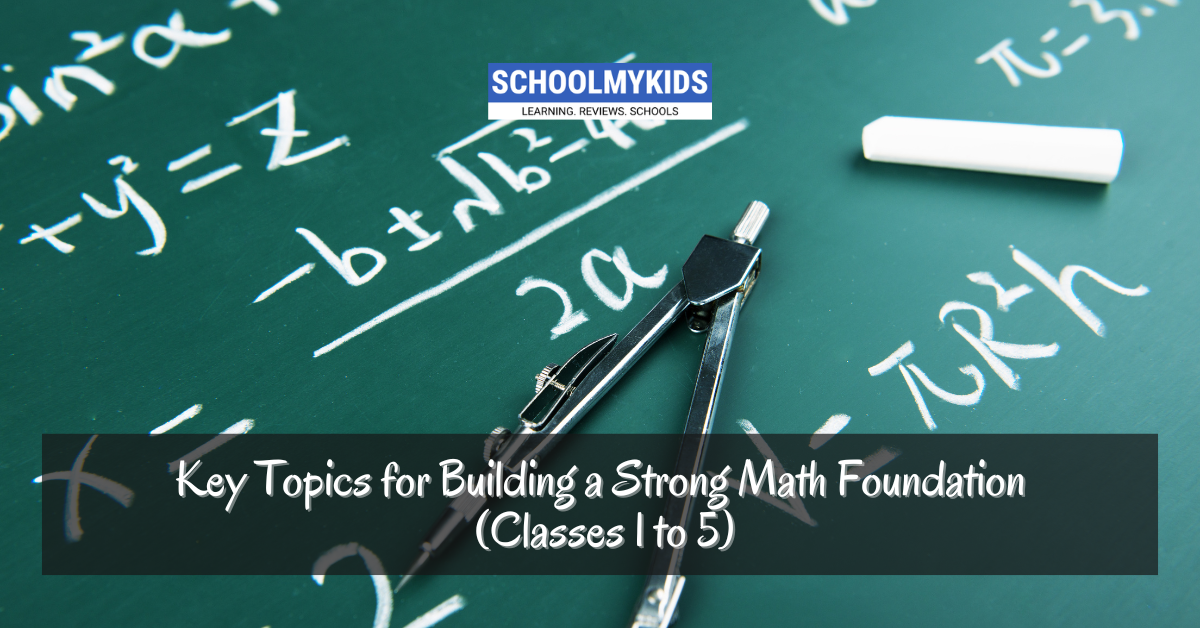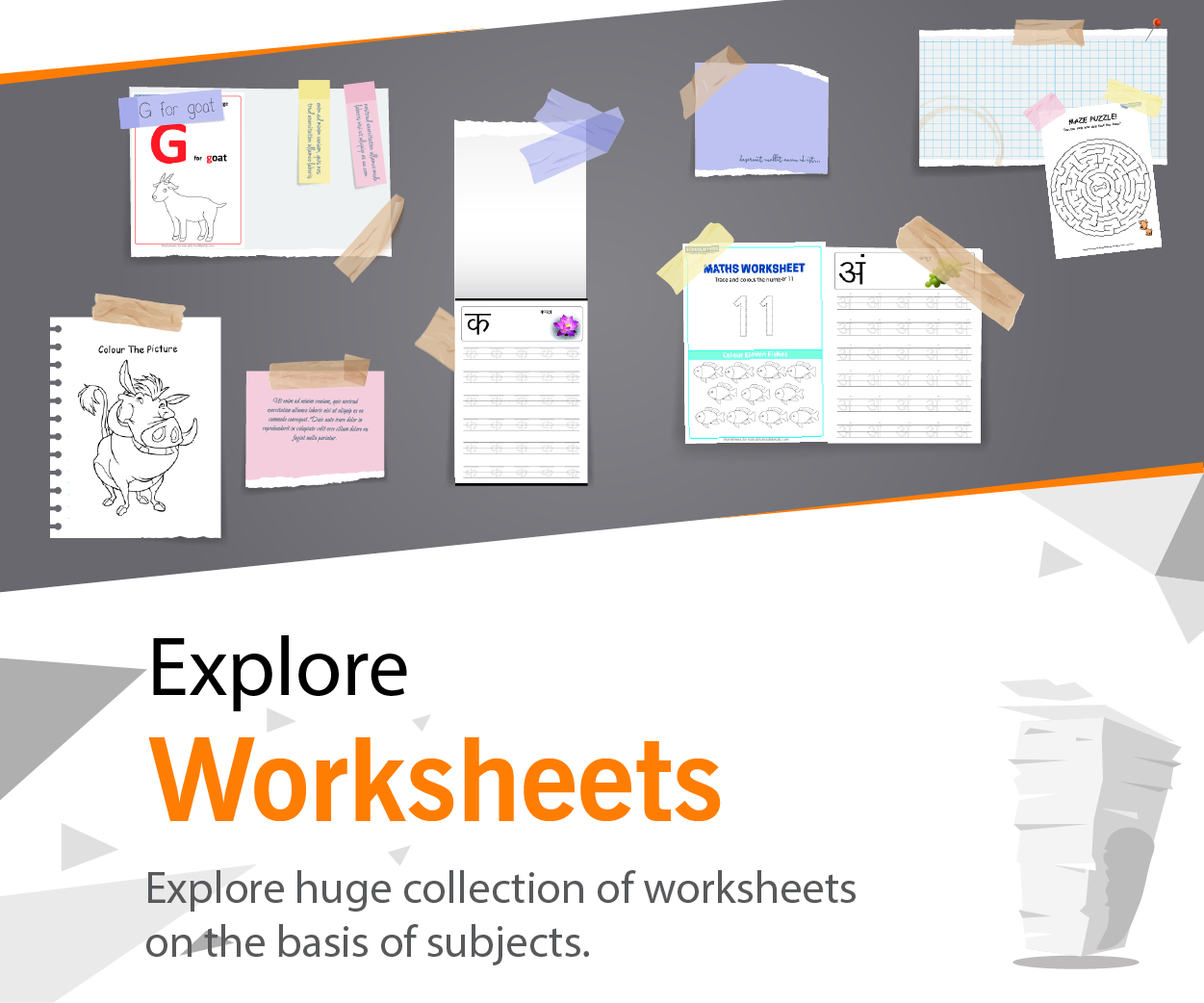Mathematics is a crucial subject that serves as the foundation for many advanced areas of study. The concepts learned in primary school (Classes 1 to 5) lay the groundwork for future mathematical understanding. Building a strong foundation at this stage is essential because these concepts act as building blocks for higher-level math and problem-solving skills. This article explores the key topics that students must master in these foundational years and explains why they are important.
Importance of a Strong Math Foundation
Before diving into the specific topics, it's important to understand why building a strong foundation in math during the early school years is essential.
- Cognitive Development: Learning math enhances cognitive skills such as logical thinking, pattern recognition, and problem-solving. These skills are transferable to many areas of life.
- Real-World Applications: Math is integrated into daily life, whether it's through budgeting, time management, or measuring ingredients in a recipe. Understanding basic math allows students to make better decisions and solve everyday problems.
- Preparation for Future Learning: Without a solid understanding of basic math, students may struggle in middle and high school, where more complex concepts are introduced. A weak foundation can lead to frustration and a lack of interest in the subject.
Key Math Topics to Master in Classes 1 to 5
1. Number Sense and Numeration
One of the most important early math concepts is number sense. This refers to a student’s ability to understand, relate, and work with numbers.
- Counting: Students should be able to count forwards and backwards, and recognize the sequence of numbers.
- Place Value: Understanding the significance of digits in different positions (ones, tens, hundreds, etc.) is crucial.
- Basic Operations: Addition and subtraction are introduced in Class 1, followed by multiplication and division in Classes 3 and 4.
Why it’s important: Number sense helps children make connections between quantities and numbers. It is foundational for all future mathematical learning, from simple calculations to algebra.
2. Addition and Subtraction
Addition and subtraction are the two most fundamental operations in math. Early understanding is usually developed through concrete materials such as blocks or counters, progressing to mental math by Class 3.
- Addition Facts: Understanding that 2 + 3 equals 5, and being able to recall addition facts quickly.
- Subtraction Facts: Similarly, understanding that 5 - 3 equals 2.
Why it’s important: Mastery of these basic operations is necessary for solving more complex problems, including multi-step word problems, fractions, and even geometry.
3. Multiplication and Division
By the time students reach Class 3, they are typically introduced to multiplication and division.
- Multiplication Tables: Memorizing multiplication tables is often a focus in Classes 3 and 4.
- Division: Division is initially presented as the reverse of multiplication and often includes practical problems like sharing.
Why it’s important: Understanding multiplication and division is critical for working with fractions, decimals, and ratios, all of which are introduced later.
4. Fractions
Fractions represent one of the first steps towards more abstract math. In Classes 4 and 5, students learn to recognize, compare, and calculate with fractions.
- Equal Parts: Understanding that fractions represent equal parts of a whole.
- Operations with Fractions: Basic operations such as adding and subtracting fractions with like denominators are introduced.
Why it’s important: Fractions are essential for understanding proportions, ratios, and even decimals. They also appear frequently in real-life situations, like cooking and measurements.
5. Measurement
Measurement is a practical area of math that students encounter in everyday life.
- Length, Weight, and Capacity: Students learn to measure objects using appropriate units such as meters, grams, and liters.
- Time: Understanding how to tell time and calculate durations is another important skill taught in the early years.
Why it’s important: Measurement is directly applicable to real-world problems and provides a concrete way to understand abstract numbers.
6. Geometry
In the early grades, geometry is introduced through the identification and comparison of basic shapes like circles, squares, and triangles.
- Shapes and Figures: Recognizing and naming common 2D shapes (such as squares and triangles) and 3D shapes (such as cubes and spheres).
- Spatial Awareness: Understanding concepts such as symmetry, congruence, and simple transformations like rotations or reflections.
Why it’s important: Geometry helps develop spatial reasoning skills, which are important in fields like architecture, engineering, and even art.
7. Pattern Recognition
Pattern recognition is a fun and engaging way for students to begin thinking about sequences and logical thinking.
- Number Patterns: Recognizing increasing or decreasing patterns of numbers.
- Shape Patterns: Understanding patterns made by repeating shapes or colors.
Why it’s important: Pattern recognition is a foundational skill for algebraic thinking and helps students make predictions and solve problems more efficiently.
8. Problem-Solving Skills
Problem-solving is a central component of math education in primary school.
- Word Problems: Students apply their mathematical knowledge to solve word problems, requiring them to think critically about which operations to use.
- Logical Thinking: Teachers encourage logical thinking by posing challenging puzzles and questions.
Why it’s important: Problem-solving skills are crucial for navigating real-world situations and for future math topics such as algebra and calculus.
Strategies for Building a Strong Foundation
To ensure that students develop a solid math foundation, parents and educators should focus on the following strategies:
- Hands-on Learning: Use manipulatives like blocks, beads, and counters to help students understand abstract concepts through concrete objects.
- Consistent Practice: Regular practice of basic math facts (like addition, subtraction, and multiplication tables) helps to reinforce memory.
- Interactive Games and Technology: Many online resources and apps are available to make math fun and engaging.
- Real-World Connections: Show students how math applies to their everyday lives, such as by cooking (measuring ingredients) or shopping (calculating totals).
- Positive Attitude: Encourage a positive attitude towards math by praising effort, not just accuracy.
Conclusion
Building a strong foundation in mathematics during Classes 1 to 5 is crucial for a child's overall cognitive development, future academic success, and ability to handle real-world problems. Mastery of key topics such as number sense, basic operations, geometry, and problem-solving skills ensures that students are well-prepared for the more advanced math concepts they will encounter in middle and high school. Parents, teachers, and educators must work together to provide a supportive and engaging learning environment that fosters a love for math and equips students with the necessary skills to succeed in the future.









Be the first one to comment on this story.